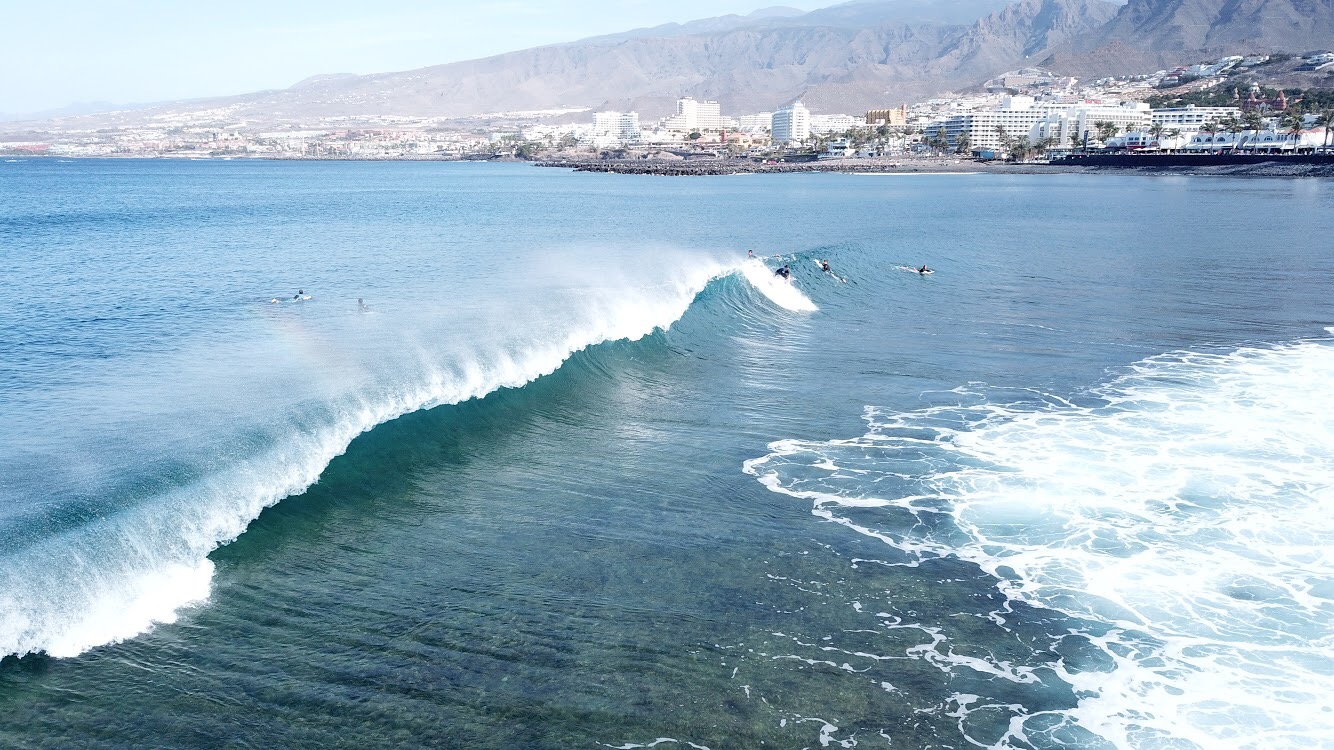Surfing is practiced at various spots in Las Americas located within walking distance of our station. We’ve prepared a description of Las Americas main spots for you, including spots for winter surfing (from October to March / April) and summer (from April to September). It’s important since the “winter” wave is stronger.
Northern – winter wave, Southern – summer wave
To learn more about the nature of the wave, about the ebb and flow time, about where and when it’s better to ride, given your training level, we advise you to contact our instructors at the station. We recommend wearing reef slippers for getting in and out of the water comfortably almost all over Las Americas spots. Despite the winter and summer periods, water temperature in Tenerife is suitable throughout the year. You can wear a wetsuit in winter months, while in summer you can ride without it, or in a short one.
Monthly water temperature:
- January-February 18-19 °C,
- March-April-May 20-21 °C,
- June 22 °C,
- June-July 23-24 °C,
- August-September 24-26 °C,
- October-November-beginning of December 22-23 °C,
- end of December 19-21 °C.
When choosing any of the proposed spots, try to respect local surfers, follow the rules of priority on the wave. Greetings: “Hola, buenos dias / buenas tardes” (“Hello, good morning / good afternoon”) – can be heard every time someone comes up to the spot. Read a brief description of the main spots in Las Americas.
El Medio
Level: all levels
Swell direction: north wave (NW, WNW, NNW, NWW swell) and south wave (SW, SSW, SWW, WSW swell).
It’s one of our favorite training spots, where we most often hold our classes. There’s almost always a wave for training here. Both, the north (winter) wave and the south (summer) wave come here. We hold training on the beach daily. The spot is absolutely safe, despite the fact that the bottom isn’t sandy.The most comfortable waves are at the average water level (mid high tide or mid low tide), ideally at high tide (mid incoming tide). If you chose the time for free surfing / practice (surfing without an instructor) just at high tide, then, most likely, the waves will be close enough to the shore and suitable for those who control the board. In case you got to the spot at low tide, the waves will probably “close” quickly and turn into foam. In this case, water level in some places will be too low.
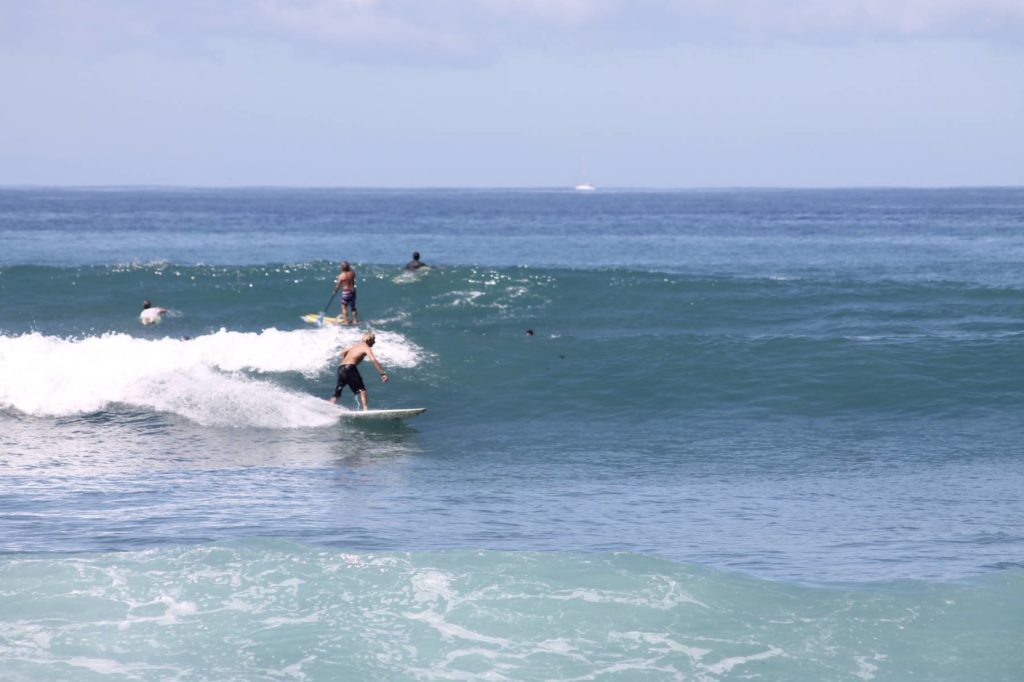
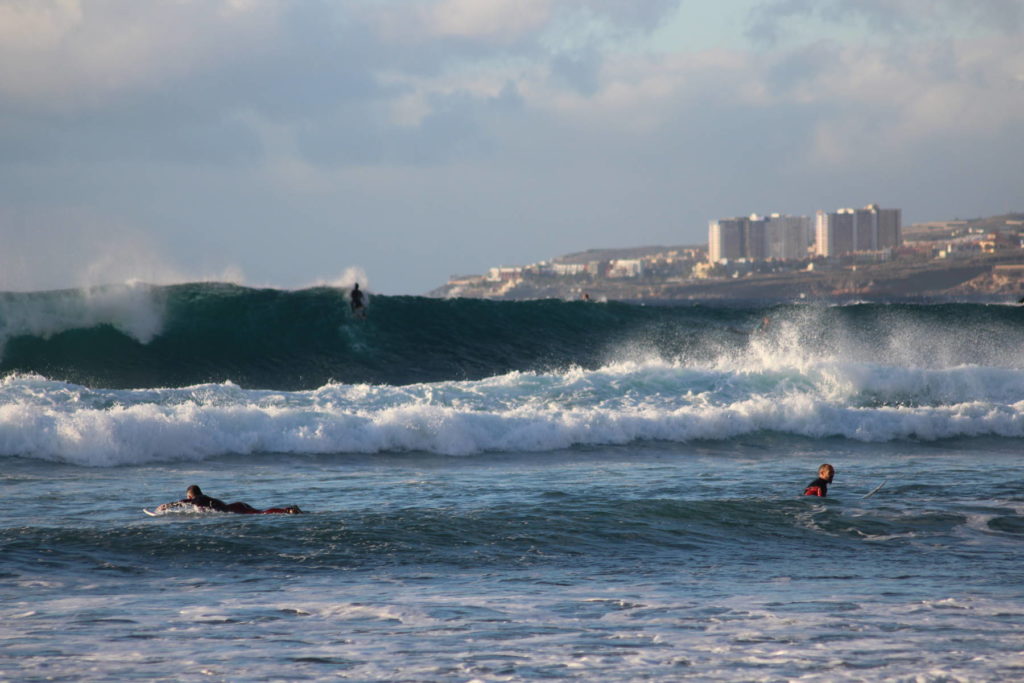
La Piscina
Level: all levels
Swell direction: south-east (SE swell), north-west (NW swell), east (W swell), south-east (SW swell) and south (S swell).
The spot is located opposite the pool (Spanish word for “pool”, hence its name). La Piscina is a reef spot that is ideal for the South swell training (summer wave). If a good wave is formed, the spot isn’t suitable for elementary training and the first lesson in particular. In this case, we choose this spot for classes with the ones who have already mastered the first steps in surfing.
El Bunker
Level: continuing, experienced
Swell direction: south-east (SE swell).
The spot is located opposite a former bunker, hence its name. This spot is famous for its active left wave that works best with the South swell. However, it is not considered to be a training wave. The bottom is reef / stone, therefore we do not recommend going straight – you’ll soon break the board. Yet, next to the left wave there’s the one for training and many students catch the “tails” of the active wave. The wave is steep and forms a good wall. Riding at low and high tide is not recommended if you’re still not certain that you know the wave well. The rest of the time – you’re welcome!
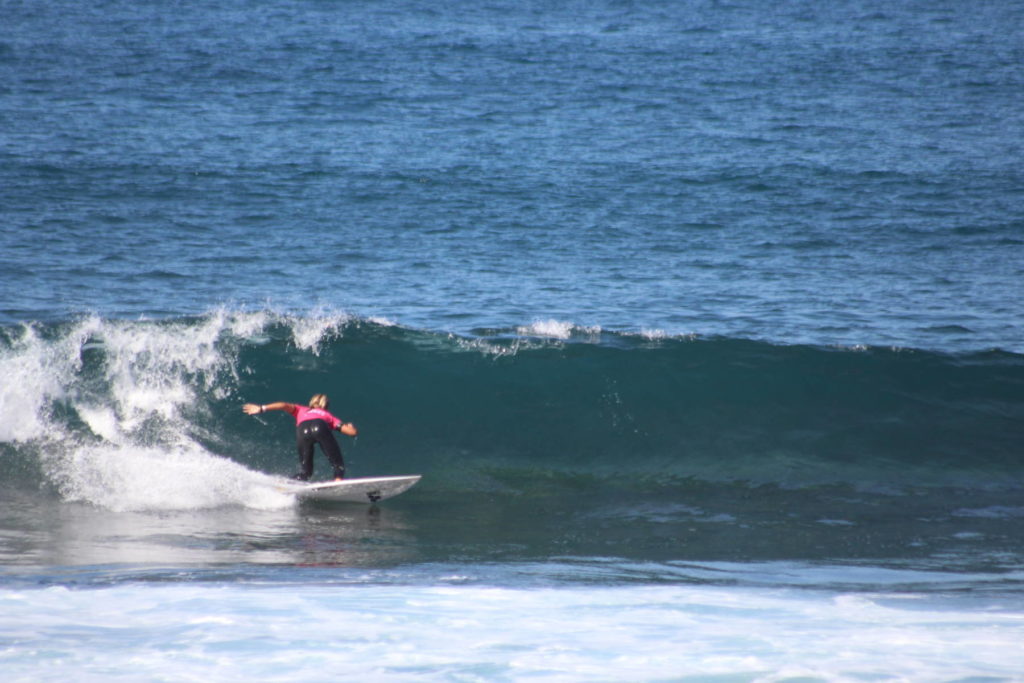
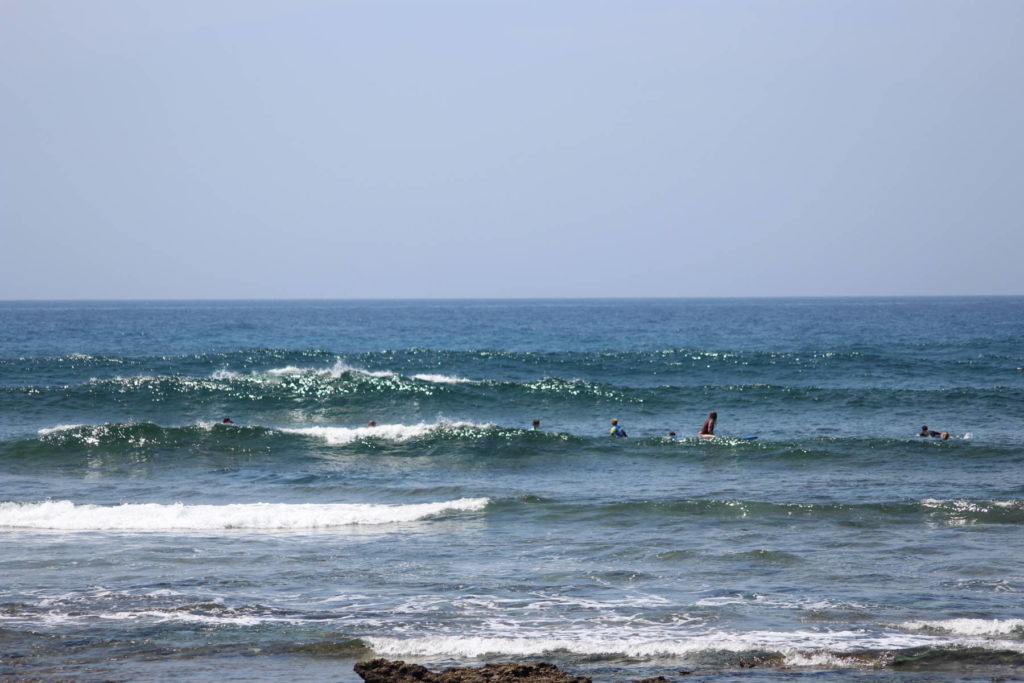
La Izquierda/Spanish Left (locals call it Palmeras)
Level: experienced surfers
Swell direction: north and north-west (W, NW swell).
La Izquierda (Spanish “left”) – the spot got its name because the wave here is left. Locals call it Palmeras, as the spot is located opposite the Palmeras Hotel. Due to its rapid nature and length, this wave is one of the most eminent in the Canaries. In case of a good north-west swell, Spanish Left forms sheen left barrels. The take-off is steep with a fairly vertical wall. A wave is formed on a rather shallow volcanic reef. One can guess that the wave is mainly left by its name, but the right one is also formed, being slightly shorter, but steeper and faster. Be careful while on wave. If mid-level surfers can still manage a small swell, the above-head-waves are for skilled surfers with impressive surfing experience only. The wave’s really close to the training spot, but its nature is not at all training. Before getting onto this wave, you need to be confident in your surfing level, that your take-off is quick enough and that you neatly know the priority rules. This spot is very popular with local surfers, so if your level isn’t enough to compete with them, your fun-time on the wave will promptly come to an end. By the way, it’s the spot that attracts surfers from all over the world and the World Surf League competition has been taking place here for several years.
La Fitenia
Level: all levels
Swell direction: south-east (SE swell) and south-west (SW swell).
If you are to know the famous Fitenia wave in France, the nature of La Fitenia will already be familiar to you. This left wave of a rather steep nature is formed with the South swell on a volcanic reef. It “works” best at medium high/low tide and full high tide. We advise you not to get onto the wave at full low tide, as it gets very shallow. When the wave isn’t big, it can be ridden by surfers of various levels. When a stronger swell comes, three peaks are formed, which can be rather tricky. Those who aren’t familiar with this wave often mix up a lineup. In summer, this spot is much loved by local surfers. We advise you to adequately assess your surfing level, as well as define your knowledge of the priority rules on the wave more exactly. The left wave is longer, but there’s also the right one formed, being much steeper and ending at the cape.
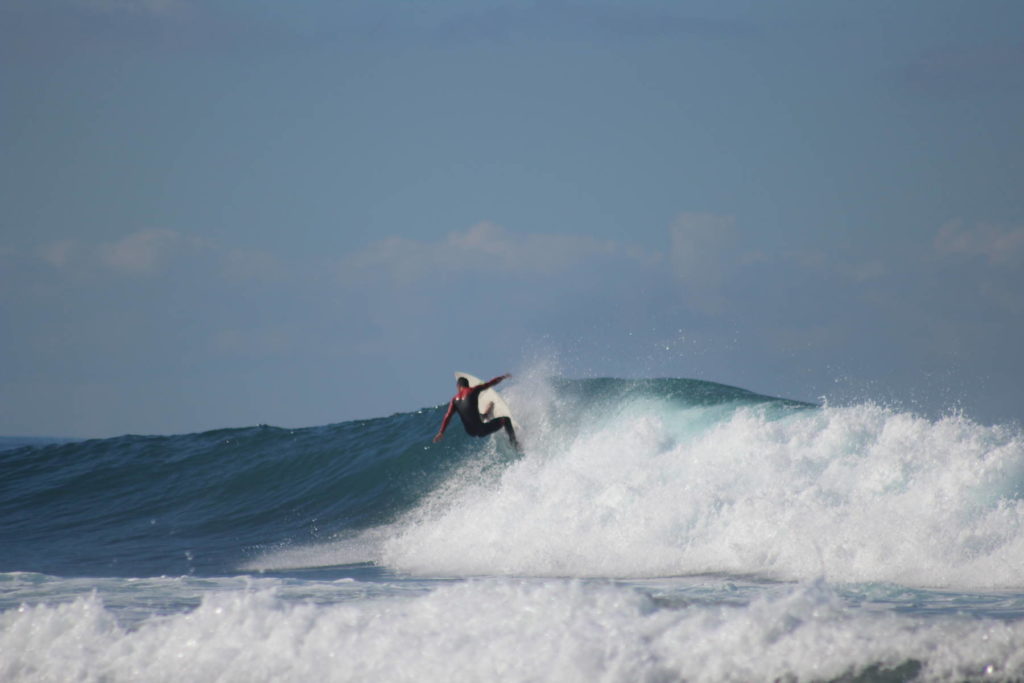
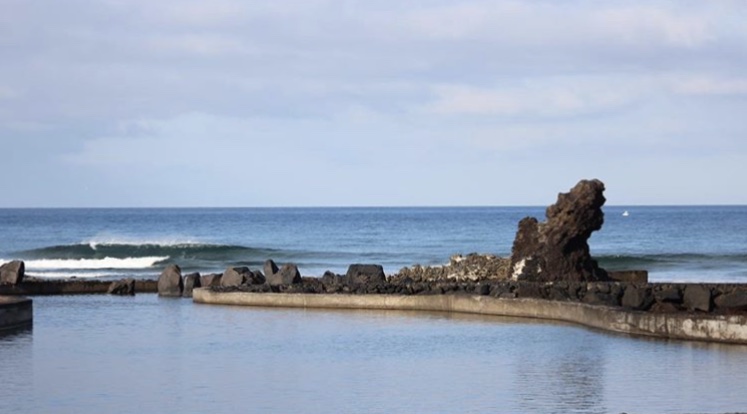
La Derecha
Level: experienced surfers
Swell direction: north (N swell), north-west (NW swell), north-north-west (NNW swell) and west-north-west (WNW swell).
La Derecha is one of the most beloved spots for local surfers at North swell. A wave is formed on a fairly shallow volcanic reef. As the name implies, the wave is right, with a steep nature and a vertical wall. The wave is slightly longer than La Izquierda. It best “works” with an average high/low tide. When the wave exceeds the human height, confident surfers ride on it. The left wave is much shorter, but very drastic. Mid-level surfers can also join in if a wave is low, but only in case they are sure about their knowledge of priority on the wave. We advise you to be polite with local people and respect priority rules; they have no fancy for uninvited guests.
El Dedo
Level: experienced surfers
Swell direction: north (N swell), north-west (NW swell) and west (W swell).
It’s situated near a pool and a large volcanic rock resembling a finger (Spanish “dedo”), sticking out into the air for 3 meters. A wave is formed on a volcanic reef. The best time to ride is at mid-level water and high tide. The right wave is longer, but a shorter left one is also formed.
These are the main spots of Las Americas. Speaking of the rest, we tell everyone, who wants to have fun on waves, about them at our lectures! Waiting for you!
